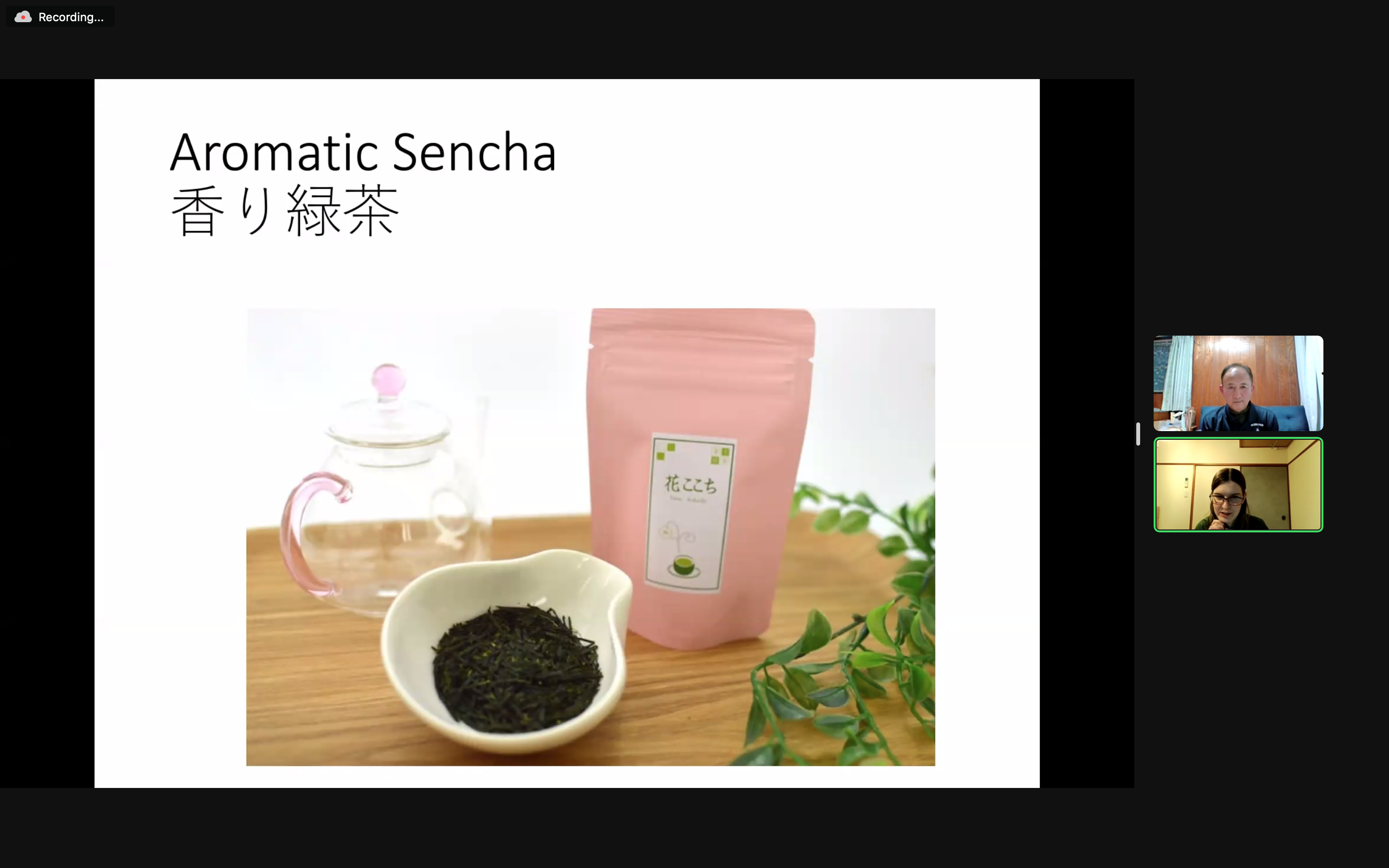On 22nd February we had one more Meet The Tea Farmer Event. This was the turn of Morihiko Yamamoto, 5th generation tea farmer of Samurai Tea Farm from Makinohara, Shizuoka Prefecture. Yamamoto-san also belongs so Katsumata Kaitaku Tea Cooperative. An interesting curiosity about Yamamoto family: they were among the first to start tea cultivation in this area. In 1869 a lot of samurai from that time went to Shizuoka to start farming and basically redeveloped some untouched area; Yamamoto-san is a descendant of that line of samurais. Yamamoto-san now specialises in aromatic teas, like oolong and wakoucha. And he even started producing a new very aromatic green tea: kaori ryokucha. And that was the first tea we tried today!

Kaori ryokucha, called “Hana Kokochi”, as Yamamoto-san named it, is something different than a regular Japanese green tea. The focus is on the aroma rather than the umami, therefore we can use hot water while brewing. Yamamoto-san suggestion was to use 3 grams of tea with 200 ml of boiling water and leave it to steep for 45 seconds. This is a rather different brewing technique compared to what is usually done in Japan with green teas. Despite the strong brewing parameters, the tea came out very nice and sweet. Everyone agreed it was such a lovely tea! The aroma of this tea is really flowery – the tea farmer told us that often people tend to describe as jasmine-like. We could also enjoy a 2nd brew at the same temperature – but with a very short steeping time and we could still feel quite some aroma in it. One of the questions was about the customers reactions to this tea. Yamamoto-san said that many people not used to tea like it a lot because it has a very gentle taste, a pleasant aroma an it is easy to brew. And now what everyone was thinking: so what is the secret of this tea? What is the reason for not being bitter at all?

Yamamoto-san explained to us than instead of processing the tea leaves straight away after the harvest, this tea goes through withering for 16 hours. In between the withering, he also alternates some bruising. This process takes out the astringency from the tea.
When making other oxidised teas Yamamoto-san has 3 different machines for those processes. One that is used for buds and younger leaves and it is a container with air circulation coming trough (slowly withering). Another is a machine that rotates and slightly bruises and withers the leaves. It moves, but not constantly: sometimes it stops and some air is coming through for withering. This is used for more mature leaves. And lastly, he also uses traditional baskets for withering hand-picked tea.

Yamamoto-san explained us that the aromas are very important for black teas and it takes from 16 to 20 hours to develop them in this kind of teas. The second tea we tasted was called hoji kaori wakoucha – roasted black tea! It was made using leaves from a benifuki cultivar, from summer harvest. It is still a black tea, just slightly roasted to bring out even more of those sweet aromas. The steeping recommendation was to use 3 grams of tea with 200 ml of boiling water and leave it to steep for 3 minutes. But first please warm up the teaware! So you can enjoy smelling the beautiful floral aroma. Black tea is still not a common tea in Japan and a roasted one even less! This tea is very unusual: how did Yamamoto-san come up with the idea? He told us that he has always enjoyed roasting. Then he started wondering what would happen if he roasted black tea. Finally he tried to do so 6 years ago – and he has been making this tea since then! Everyone thought that this tea is very different and very nice. Some said that it definitely tastes like black tea but it is sweeter – despite brewing it for quite some time. The bitterness is very subtle, the tannins and the astringency are very gentle compared to other wakocha. Some others found that it has a sweet honey aftertaste, quite lovely and delicate. One participant even said that both these teas reminded her of oolong. And actually the bruising machines are what makes the tea to develop the floral aroma, which is usually more typical for oolong teas.

The conversation throughout the event was quite interesting. We also got to talk about how Yamamoto-san started cultivating benifuki cultivar because of it supposedly good effect on allergies. And how he sees his tea plants in summer being bitten by the small insects that are famous for causing a little bit of oxidation in the leaves. Moreover, we talked about how Yamamoto-san introduces his teas around. He often participates in competitions and when he receives an award, then it is easier to introduce the tea and get the attention. He also would love his teas to be enjoyed abroad but he didn’t have the chance to do it yet. Maybe this event could be a start! As a final message, Yamamoto-san told us he was really grateful for today’s event and for meeting all of you tea lovers that participated. He was really happy to be able to share these two of his teas and he hopes that each of you keep trying more teas. Well, that is not a difficult task for us tea lovers, isn’t it? 😉 A huge thank you to Yamamoto-san for his time and his wonderful teas!

